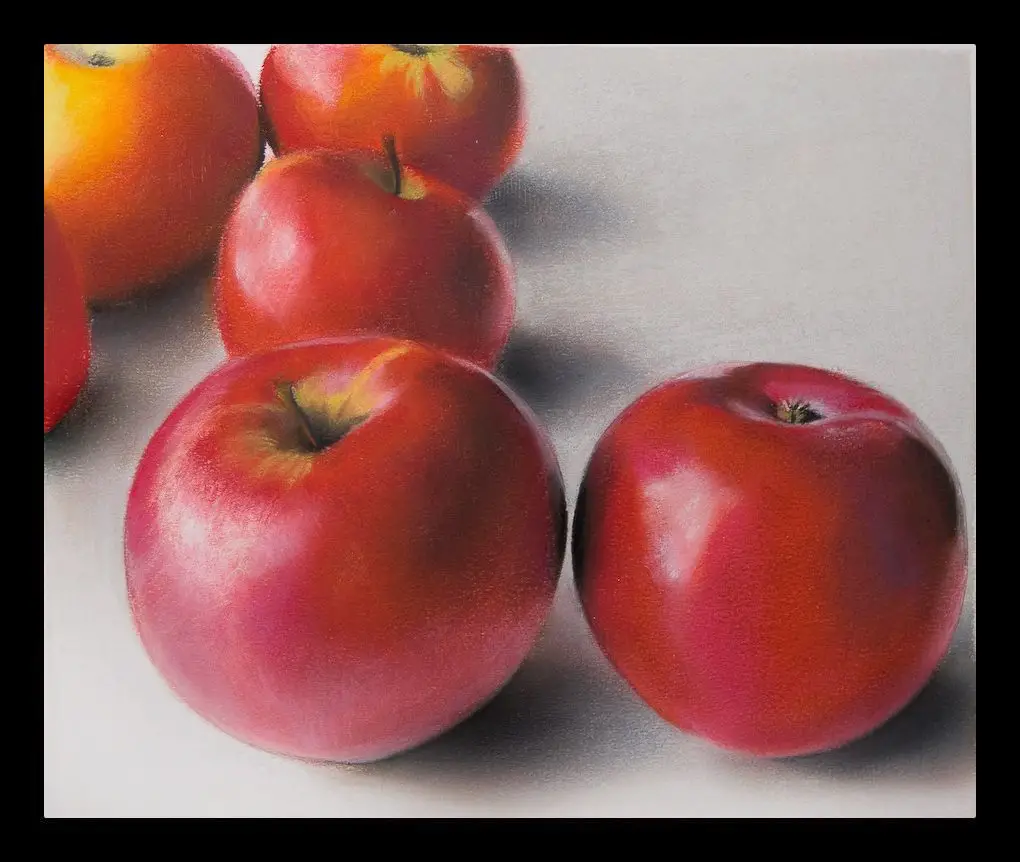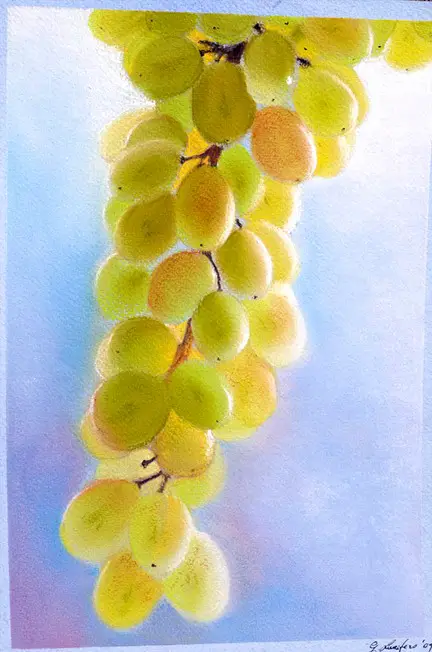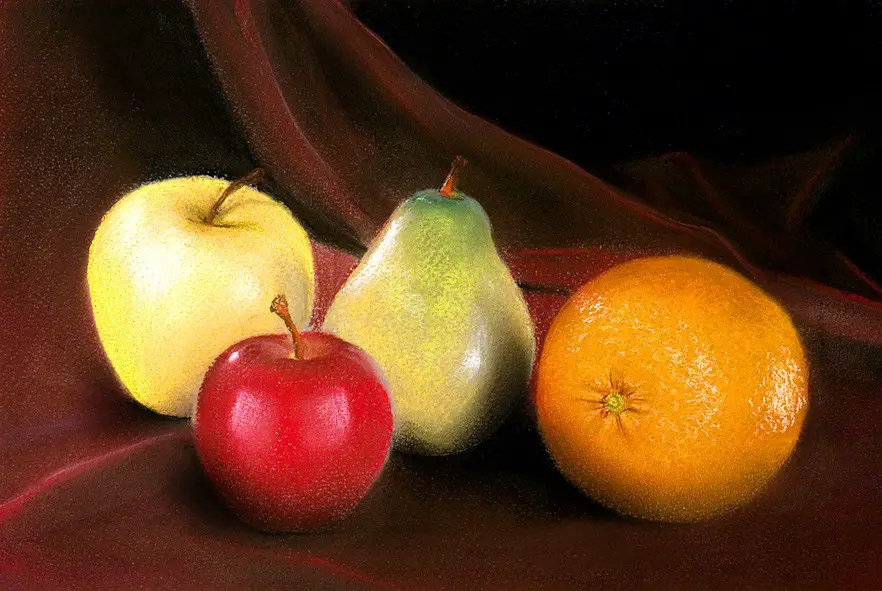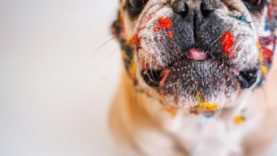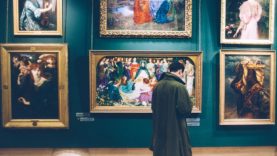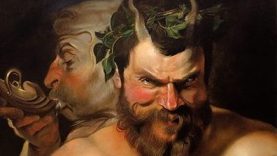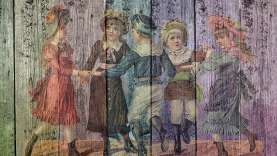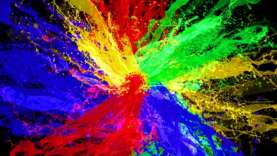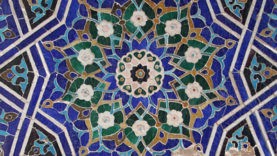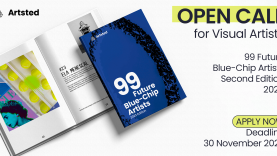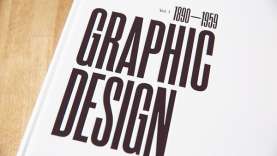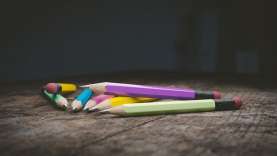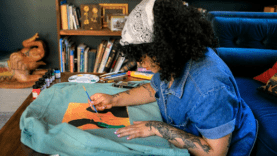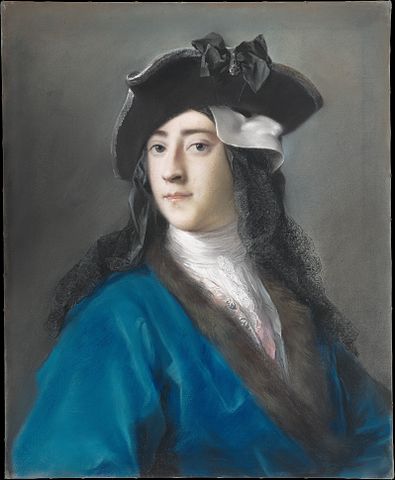
Pastels – An introduction for beginners
This article is a simple pastel painting introduction for beginners.
I will answer some of the most common questions about this medium and I will give you some interesting information.
How are pastel made?
Pastel is obtained by mixing the powder pigment with some substances depending on the desired color and hardness (traditionally a mixture of water and milk, honey, Arabic gum, or Marseille soap).
The intensity of the color varies according to the proportions between the pigment and the binder used. This paste is modeled as cylinders and left to dry.
The shades of colors are obtained by adding white clay; Armenian bolus is used for reds, black haematite for dark shades.
A short video documentary about Unison British Handmade soft Pastels. Meet the people behind the manufacturing of one of the most appreciated brand of soft pastel: How Unison British soft Pastels are made
In this video, you can take a look inside the factory that has been producing high-quality handmade pastels for more than 140 years. Let’s find out how Schmincke soft pastels are made: How Schmincke Soft Pastels are made
Different kind of pastels
Pastels can be soft, semi-hard and hard, they can be found as cylindrical sticks, as pencils and lately, as powder pad called PanPastels.
Usually, hard pastels are used for drawing and for adding details while soft pastels are a better choice to cover and toning large areas of the painting.
Pastel pencils are a little more expensive than sticks but they are very useful for detailed artworks since they can be sharpened.
There are many brands and sets of pastels and each one has its own characteristics but there’s no reason to avoid mixing different kinds or brands of pastels because they can be used and blended together in the same artwork with no problem.
In this video, Alain Picard will show you the different kinds of pastel you can find in art stores. He will explain the difference between hard, medium and soft pastels: What Pastels Should I Use?
Surfaces for pastels
Painting with pastels doesn’t require many tools, actually, few pastels sticks and a sheet of paper could be enough. Pastels can be used on any surface that is rough enough to retain a part of the color applied with light pressure. There are even sandpapers prepared exclusively for pastel but it can also be used on fine-grained canvases.
Pastel artworks can be painted also on a toned paper so the color of the sheet can be used as background or as a mid-tone.
Spreading pastels with fingers make easy tones blending and allows to create delicate hue gradations. The natural fat of the fingers helps to make the powder adhere to the paper without altering its opacity but it’s to avoid overworking with fingers.
Alain Picar shows his favorite kind and brands of pastel paper: What Pastel Paper Should I use?
How to protect pastel painting
In order to guarantee the durability of pastel artworks, it’s necessary working on grainy surfaces and fix it by spraying the back with milk, water, Arabic gum, etc. Some artist uses fixative on the front of their artwork but I prefer to avoid it because it makes change the colors and actually it doesn’t work so well.
Since these kinds of artworks are very difficult to clean, it’s advisable to take preliminary precautions to ensure their conservation. Usually, same criteria for drawings are used, being careful not to directly overlap papers or other materials on the surface of the pastel, which can detach part of color powder just by contact.
The best way to display and preserve a pastel painting is by keeping it framed under glass. To store your pastel paintings, you can use a flat panel (plywood, cardboard or foam board) and a sheet of glassine paper.
Chrissy from the Xrissart channel has tested many fixatives for pastel, watch the video: Testing fixatives for pastels on paper & canvas
In this video, Jason Morgan will explain his method to store and protect his pastel painting: How to store pastel paintings
Lindsay Weirich share some tips about how to protect and store your pastel paintings without fixative: How to protect pastels without fixative
The history of pastels
Pastel, already used in the 15h and 16th centuries, was used to refine portraits sketched with other techniques (silverpoint, sanguine) with color. Only Hans Holbein the Younger used pastels systematically in many portraits.
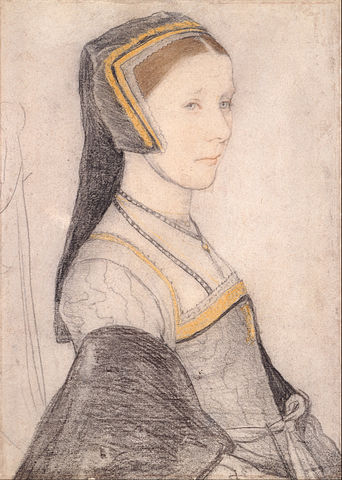
In the 18th century, this technique reached its maximum spread and was used especially for portraits. In fact, the delicate and slightly cold colors of pastels found full correspondence in the Rococo taste, while the rapidity of the execution satisfied the love for sketches.
Artworks were small size, due to the difficulty of covering large areas with color, and on the other hand, its character as an intermediate technique between drawing and painting further facilitated the use and diffusion of pastels.
Perfected by Joseph Vivien (ca. 1700) the pastel was used in the 18th century by Rosalba Carriera, Maurice Quentin La Tour, J. E. Liotard, etc. In the 19th and 20th centuries, it was used sporadically and only when this technique was presented as the most suitable for representing a certain subject. Such is the case of the Portrait of George Moore, by Manet (New York, Metropolitan Museum) where the pastel strokes of bright contrasting colors immediately capture the psychological traits of the subject.

Degas was an exceptional painter with pastels, he broke the tradition of superficial delicacy and brightness that pastel had inherited from the 18th century. Degas renewed the subjects, subtracting the pastel from the limited scope of painting portraits to which he had been confined, and the technique, applying the pigment to successive layers which he fixed with a special preparation.
In this way, he succeeded in avoiding the clumping of the pastel and preserving the brilliance of the color without losing opacity. Furthermore, he used pencils with a maximum of pigment and a minimum of binder, thus overcoming the obvious and limited effects of traditional pastel.
Other impressionists also sometimes used pastel alone or together with colored pencils and watercolor (Renoir, Pissarro, Berthe Morisot, Sisley).
How to make your own pastels
To make your own pastels you will need pigments, water, a binder and eventually some other substance. Here there’re three recipes:
- Animal glue or gelatine: Mix the pigment with water until you obtain a paste. Then add 3 parts of glue to 100 parts of this pigment-paste.
- Arabic gum: Mix pigment with water and add 2 parts on 100 parts of pigments. You can add just a bit of honey to make it less friable.
- Skimmed milk: You can use milk instead of water. Skimmed milk is a very light binder so your pastel will be very soft.
(You can use many different substances as a binder, you should make some tests to find which one is better for you. I use milk as a binder…it’s the easiest and fastest method to make pastels.)
Now that you have this mix of pigment, water (or milk) and binder, you can model it in a cylinder shape. Leave these little cylinders on a sheet of paper to absorb the water and let them dry.
To test the quality of your work, dip the tip of your pastel in water: if it doesn’t absorb water it means that you have added too much binder. If instead, trying to use it on paper, it crumbles into large fragments, it means that you have used too little binder.
In a few attempts, you will surely find the right proportion between binder and pigments.
Author: Giovanni Lucifero

